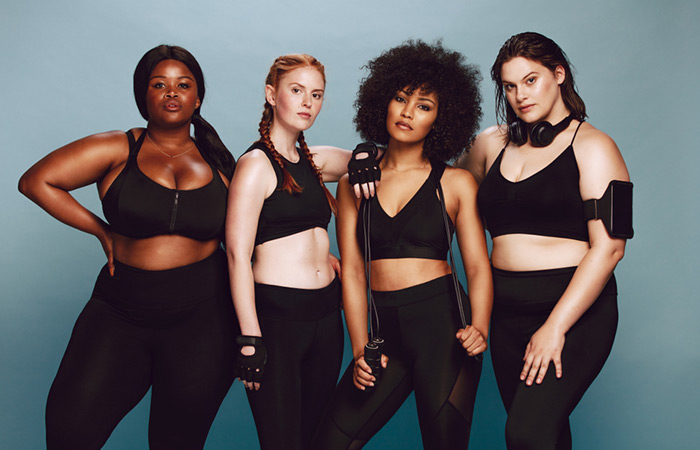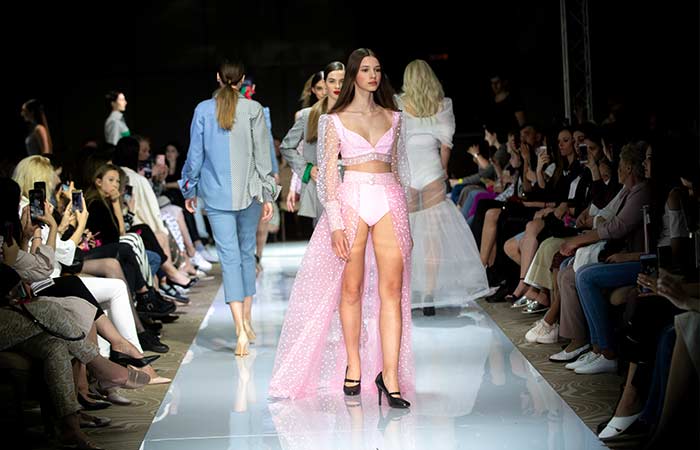When asked "how to become a model?" most people would respond that "looks" are the most valuable commodity for models. And they're not totally incorrect. You see, appearance is the fundamental value proposition in the modeling profession. If you want to be a supermodel and have a great modeling career, you must possess more than simply good looks.First, you must learn what sells things, followed by a thorough understanding of the business's operations.That is why industry titans prioritize models like as Giselle Bundchen, Heidi Klum, and Jerry Hall.
The following are the essential prerequisites for becoming a model. Following these steps will help you learn how to be a model and what it takes to remain on top. Keep scrolling!
What Does A Model Do?

The first thing a model does is attend castings. When a designer or photographer wants to create a fresh style for their collection, they will contact modeling agencies to see if any of their models have the desired 'look'.For example, the designer may need a female with red hair and freckles or a male with a certain physical type.
Designers may wish to project an appearance of perfection. So they will choose models with no physical defects. It would be the situation if the designer need a model for a high-fashion project.
At other instances, designers will choose models that are not ideal but are closer to real-life standards. For example, you may be picked if you have a fantastic grin that complements items made for younger people, or if your heavy brows complement anything designed for an older audience.In brief, a designer may request anybody from thin to average to fat as long as the model has a certain appearance that complements their vision of what they are attempting to achieve.
Ashlyn, a model and writer, discussed her modeling experience on her blog. She claims that small-time designers are more adjustable, describing one of her shootings as "Our audience was small, and my designer was kind and accommodating." She let us bring our own wigs and do our own hair and cosmetics." She also went on to lay down what a model's job entails with an encouraging tone, saying, "Modeling is difficult! It is physically and emotionally exhausting since 90% of fashion presentations involve waiting around. Waiting for everyone to arrive, waiting for makeup artists, hair stylists, costume inspections, practice runs, professional shots, the show to begin, your time on the catwalk, and the event to conclude. So much waiting! But it is also quite gratifying. I've made friends via these exhibitions, earned valuable experiences and memories, and met beautiful Japanese designers and models.
Read also:
- Peaky Blinders Women's Fashion: Beyond the Brims
- The Ultimate Guide to Moulin Rouge Inspired Outfit Ideas 2023
- Amazing Omez Beauty Products Chebe Hair Butter
Types Of Fashion Models
Fashion is a broad field, and stylistic preferences vary drastically from one person to the next. Therefore, there are five important categories of fashion models, as mentioned below:
-
Beauty/Glamor Models
Beauty or glamor models sell the idea of the product. They should ideally have attractive, soft, smooth, and clear skin. Beauty models are hired to make products look good. Their main purpose is to be pretty and demonstrate what a product will do for the consumer if they buy and use it.
Sometimes, beauty modeling can be as simple as just having perfect skin or hair, and the product is shown as an accessory that you can use to keep up with your beauty.
-
Runway/Fashion Models
A runway model showcases how the designer’s clothing will look on someone and how it is supposed to fit. For instance, if there is a new line of women’s jeans and jackets. They might bring in a thin and tall model, representing the target consumer base. It also goes to show that extreme sizes do not restrict the clothes.
For yoga pants, sunglasses, or cute hats, the designer may choose a model who looks more mature but also athletic and hip. Their style has a younger flair, but their age makes them appealing to an older crowd. In this case, it is not about what they wear but how they carry them.
The audience should be able to look at the runway model and visualize themselves in the clothes. So, it is important to bring in the right type of model to wear your creations so that people can see how it is supposed to look on them.
-
Editorial/ Print Models
An editorial model showcases clothes created by designers and international fashion houses on the cover of high-fashion magazines. These jobs take place in studios or outdoor locations.

-
Body Types/Diversity Models
The beauty and fashion modeling industry has diversified now. Models come in all shapes, sizes, ages, and colors. In the past, fashion models were usually tall, white women with abs of steel and long legs. But today, the field has opened up to a more diverse group of people.
You will also find advertisements that don’t use a single model and instead show representations of various sizes and shapes. It helps demonstrate that people of different shapes and sizes can wear the clothing.
-
Commercial Models
Commercial models are usually very attractive and have special skills to help sell the products. The purpose of commercial models is to show products being used properly. They could explain how much better their product is than the competitor’s, or they could just show the products you know and love. They demonstrate how buying the product can make your life better. The main purpose of commercial models is to show you how awesome their product is.
- Catalog Models
Catalog models are individuals who act as product or clothes models for catalogs, internet merchants, or advertising materials. They are chosen based on specified criteria, such as height and overall appearance, which suit the target demographic and the brand's style. These models often work in a studio setting, posing for photos of the items that the firm desires to sell.
They typically have a flexible disposition and may fit into a variety of styles. To properly reflect the catalog's intended style, they must be versatile in their postures, facial emotions, and body language. This specific sector in the modeling business values uniformity and the ability to adequately emphasize the items.
Once you've decided on the kind of model you want to be, you may focus on the essential abilities required for the career. Check check the following section to learn more about them.
10 Tips On How To Become A Model

- 1 Learn To Walk Gracefully
Models are usually expected to walk the runway with style and elegance. It means getting rid of any weird movements you might have, like hanging your hands at your sides or swinging your arms back and forth. Instead, practice making entrances for things, and pretend you are on a runway by strutting instead of walking. This is also what they teach in modeling schools.
- 2 Work On Your Facial Expressions
Learn how to emote for photos so that you can sell a product better and be more impressive on the runway or the screen.
- 3 Get A Tan
Or, if you don’t want to get a tan, use bronzer or some other spray-on tan product. You can also choose products that make your skin darker naturally.
- 4 Your Clothes Should Fit Your Body
They should look like they are the right size. Make sure you are not unprofessionally dressed when meeting casting directors or producers. Avoid too big or ill-fitting clothing because it can make you look much larger than you are when on camera or in a photo.
- 5 Wear The Right Amount Of Accessories
If you are unsure what that ’right amount’ means, ask your photographer or stylist for advice.
- 6 Hair Should Be Clean And Styled
If you have curly hair, try to style and manage it to look good rather than unruly on camera or in photos. If you have straight hair, maintain your mane’s volume and give them a clean hairstyle.
- 7 Practice Posing
You can do this in front of a mirror to see what you look like when you are on the camera, taking photos, or in modeling competitions. Memorize poses that accentuate your best features, but don’t be afraid to try new things because sometimes new poses can look great too.
- 8 Try To Look Natural And and Friendly
You don’t want the camera to capture a photo of you looking angry, sad, or intense because those emotions are not very attractive. The general idea is that models should always look happy and confident in their photos. If you don’t feel confident about your abilities, pretend until you do.
- 9 Make Sure Your Photos Are Edited Well
You can hire someone to edit your photos or if you know how to do it, feel free to edit them yourself. The photos should be edited so that the background looks as neutral and uncluttered as possible. That way, the viewer can focus on you and your face.
- 10 Build Your Portfolio
Have about thirty to fifty of your best photos ready for when you go on an interview or on modeling auditions. Use a modeling portfolio that is simple and professional-looking, but one that shows off your personality well to get a modeling contract.
In A Nutshell
Becoming a model is not as glamorous or simple as many people believe, but this article's modeling suggestions might aid aspiring models. First and foremost, remember that modeling is about more than simply looking good in photos; it is also about selling items and seeming natural on camera. And don't be scared to practice posing in front of a mirror until you feel comfortable walking down the runway or selling a product confidently. So what are you waiting for? Get out there and be the greatest model you can be!
